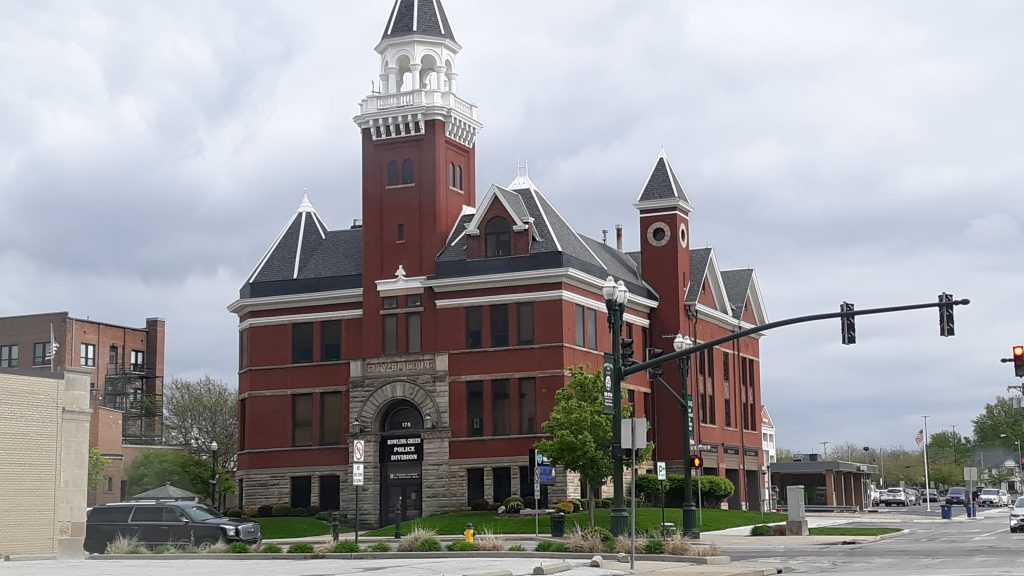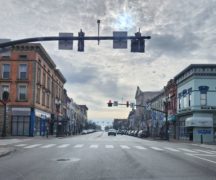By JAN LARSON McLAUGHLIN
BG Independent News
Two Bowling Green structures have passed the first test to be placed on the local historic register by the city’s Historic Preservation Commission.
One was formerly a showplace for fair flowers. The other briefly served as the county courthouse, and was the site of a massive purge of “hooch” during Prohibition.
Needle Hall in City Park was originally called Floral Hall, since it housed the floral exhibits for the Wood County Fair which was previously located on the grounds of the park and neighboring golf course. The structure also served as an exhibition space for needlepoint, and was later renamed Needle Hall.
The structure, built in 1884 by an unknown architect, is an octagonal-shaped pavilion constructed of wood on a rock/brick foundation with a floor plan shaped like a four-legged Greek cross.
The end of each of the four cross legs are extended beyond the central octagonal floor plan shape. Overhead is a hip-style wood shingled roof over each of the four cross legs and an octagonal shingled roof over the central octagonal plan. Double doors are located at the end of each cross leg.

The city’s Police Division Building, at 175 W. Wooster St., was built in 1892-1893, and briefly served as the Wood County Courthouse from 1894 to 1896. It later became the Bowling Green City Building, which housed various city offices and the fire station.
In 1986, the building underwent an extensive renovation to serve as the city’s police building. The exterior footprint, materials and shape were not greatly altered.
The three-story Romanesque-style structure was designed by architect David L. Stine. Its multiple gables and peaks are similar to Queen Anne rooflines, and its tower has a column-supported open belfry and balustrade.
The main entrance is set under a heavy stone arch facing West Wooster Street. Facing South Church Street are three large bays, originally built for fire equipment. The adjacent connected hose drying tower exhibits glazed oculus windows with stone surrounds, and a four-sided pyramidal roof.
The paperwork filed for the city’s historical designation included a story printed in the Daily Sentinel Tribune in 1923. The story told of the city building being haunted by the spirits of John Barleycorn during Prohibition.
Bowling Green’s police department had reportedly recently emptied 1,150 gallons of “hooch” and 75 cases of beer into the sewer in the basement of the building.
“The spirit is there all right. You c’n smell ‘im any place in the building one is able to detect the odor of his ghost, which has slipped into the cracks and corners. Hundreds of Johnnie’s mourners have been roaming over to the edifice to sit down and think about the ‘old days,’” the newspaper reported.
Another public hearing on the historic designation of the two buildings will next be held by the Bowling Green Planning Commission.





